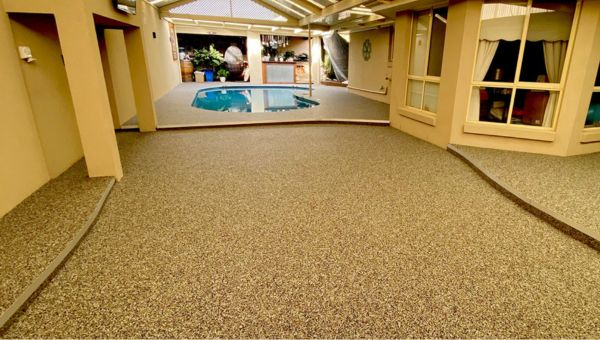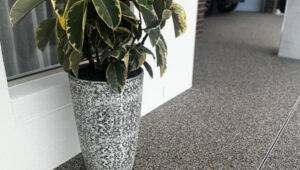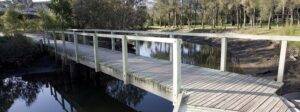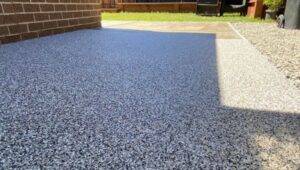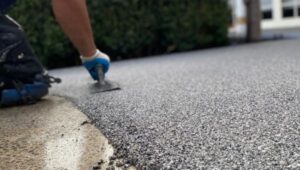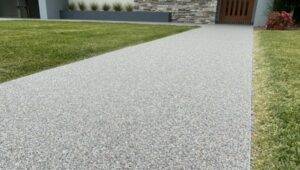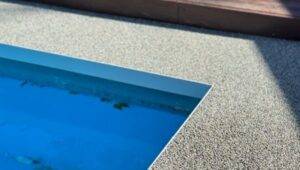Concrete Resurfacing 101 bringing life back to your pathway
Resurfacing concrete surfaces gives new life to tired and worn-out concrete features in outdoor environments like paths, driveways, and hardscape features such as pathways or driveways which have seen better days due to constant exposure to harsh weather, foot traffic, and vehicular movement. Concrete features exposed to harsh climate conditions are susceptible to wear and tear over time which causes their eventual decay over time. Resurfacing offers the solution.
Upkeep of pathways and concrete surfaces is paramount in safeguarding outdoor environments as well as in terms of aesthetics and safety. Cracked, uneven, or discolored concrete not only detracts from its overall beauty but may even pose serious hazards to pedestrians as well as vehicles passing its course.
Concrete resurfacing offers an economical and practical solution to these issues, using an overlay layer made up of specially mixed concrete that covers imperfections while reinforcing the structural integrity of surfaces. Not only is the process aesthetic in terms of its appearance; its longevity provides long-term advantages with minimal upkeep required.
Understanding Concrete Resurfacing Solutions: the Basics
Concrete resurfacing entails applying a thin coat of specially formulated concrete overlay onto existing surfaces to restore the appearance, functionality, and longevity of pathways or surfaces. Resurfacing helps restore their aesthetic value as well as preserve them over time.
Concrete resurfacing may become necessary for various reasons. Resurfacing can help repair minor cracks and surface imperfections, restore faded or discolored slabs or simply improve their texture and appearance – instead of replacing with brand-new slabs altogether, resurfacing offers an easier, less disruptive, cost-effective option that also has reduced environmental disruption.
By understanding the differences between resurfacing and traditional replacement, property owners can make more informed decisions regarding which option best meets their concrete maintenance needs. Resurfacing allows faster turnaround time, lower labor and material costs and causes minimal disruptions compared to replacement; making it a popular option among both homebuyers and property managers
Here are the essential preparation steps:
Pressure Wash or Concrete Cleaner Tools Are Perfect for Clearing Away Dirt, Debris & Stains From Surfaces: Pressure wash or concrete cleaner tools are fantastic ways of clearing away dirt, debris, oil stains or coatings on concrete surfaces that have formed, leaving beautiful-looking floors. Their powerful spray can quickly dislodge existing coatings so your surfaces continue to appear flawless!
Fix Cracked and Damaged Concrete: Concrete patching compounds allow you to fill any holes or cracks on its surface quickly while also leveling it seamlessly with its surroundings surface – for excellent results! This makes repairs much faster.
Be sure to Evaluate Surface Condition Before Beginning Resurfacing Activities: Before undertaking concrete resurfacing efforts, carefully analyze its surface condition for signs of significant wear or deterioration to avoid further degradation and damage to its surface.
Proper surface preparation is the cornerstone of a successful resurfacing project, providing increased adhesion between overlay material and concrete surface, as well as creating long-term uniform finishes that stand the test of time.
Below is a list of materials and tools required for concrete resurfacing:
Concrete Overlay: Resurfacing concrete surfaces using an overlay is one of the more popular choices when it comes to surface restoration; with multiple formulations designed specifically to suit specific tasks – thin overlays may provide better coverage in smaller repairs while thicker ones could help provide greater coverage in larger renovation jobs.
Primers for Concrete Surfaces: Primer applications should only be performed after completely cleaning and repairing surfaces to maximize adhesion between existing concrete and the overlay material. Depending upon what kind of overlay material has been selected, mixing paddles, drills, or concrete mixers might be required to accurately prepare it before placement.
Trowels: Trowels can quickly spread and smooth coating material across surfaces such as floors. Resurfacing tools such as squeegees, rollers, and brushes ensure even application.
Protective Gear: For optimal resurfacing results, safety glasses, gloves, and a dust mask must be worn at all times to help minimize potential risks during this process.
Considerations when selecting materials include existing concrete conditions, the desired thickness of an overlay layer, and any specific requirements of your project. High-quality products specifically made to meet these specs will enable more achievement of desired outcomes.
Several steps typically play a part:
Mixing an Overlay: Always follow your manufacturer’s directions when mixing overlay material to achieve its optimal consistency, whether using a drill equipped with paddles or a larger-batch concrete mixer.
Apply Primers: Once surfaces have been prepared for priming, using either rollers or brushes, apply an even coat by manufacturer recommendations regarding drying timeframe and thickness.
Implementation: Once mixed, pour it onto a primed surface and spread with an edger or trowel using even strokes until full coverage and thickness have been reached. Take steps as necessary until this step has been completed for optimal results.
Smoothing and Finishing: After installing an overlay, use a trowel to smooth away any ridges or imperfections in its application and add texture or decorative finishes as necessary.
Curing and Sealing: Allow your newly resurfaced concrete to cure for its recommended time before sealing it with anti-stain sealers for added protection from staining or damage.
Resurfacing challenges typically include uneven application, air bubbles, and premature drying. To address these obstacles, work methodically while closely adhering to manufacturer instructions, seeking help immediately from experts or suppliers should any complications arise during this process, or any difficulty arise during any step. For any difficulties that occur during any step in this procedure seek immediate advice as soon as possible for troubleshooting advice from them.
Additional finishing touches
Resurfaced concrete can become even more captivating by embellishing it with decorative features like stamped patterns, engraving or stenciling that resemble natural stones such as brick, tile or slate in its appearance. Such embellishments add depth of visual texture that enhance visitor experiences when visiting.
Color Enhancement: Add depth and dimension to newly resurfaced concrete by applying tinted sealer or stain to its surface in order to give depth and dimension that complements surrounding landscape features or architectural structures, giving depth-enhancing capabilities in their vicinity. This technique gives depth-enhancer capabilities.
Texture Patterns: Texture patterns added to newly resurfaced concrete surfaces can both increase traction and add visual interest; such as adding broom or swirl textures that increase slip resistance for both pedestrians and vehicles alike – potentially making walking safer than driving! Textured finishes like these could even make walking safer!
Sealing: To increase durability and resistance against stains, moisture damage, and UV radiation damage on newly resurfaced concrete surfaces, use a sealer specifically developed for use on overlays – taking note of manufacturer recommendations when it comes to application and upkeep for maximum success.
As part of your concrete resurfacing plan, including finishing touches can enable you to further customize its appearance and performance to meet both aesthetic preferences and performance targets.
Below are a few maintenance guidelines:
Routine Cleaning: For optimal performance of resurfaced concrete floors, regularly sweep away debris before washing away with mild detergent/water solutions as necessary. Harsh chemical cleaners could damage sealer/overlay systems; before employing such aggressive solutions it would be prudent to consult an expert first.
Sealer Maintenance: Regular checks should be undertaken to detect signs of wear or damage such as flaking and discoloration to provide optimal stain and moisture penetration protection as well as to reapply sealant if required.
Preventative Measures: In order to protect newly resurfaced concrete from further wear and tear, take preventive steps like placing mats or rugs over high-traffic areas, not dragging heavy items across them, and quickly responding when spills and stains arise.
Routine Inspections: For newly resurfaced concrete surfaces, routine inspections should be scheduled at regular intervals to detect signs of wear or cracking and address minor defects as soon as they arise, thereby limiting further worsening over time.
Resolving Minor Concerns: For newly resurfaced concrete surfaces with minor concerns, repair any cracks or damages using appropriate patching materials according to type or purpose, using patching techniques when necessary; for further assistance on maintaining its surface consult an experienced contractor.
By following these maintenance tips, you can extend the longevity of newly resurfaced concrete surfaces while keeping their aesthetic at its finest over time.
when considering concrete resurfacing as part of your plan
Resurfacing concrete surfaces offers many benefits for walkways and other surfaces, including:
Resurfacing Can Improve Appearance: Resurfacing concrete surfaces is an effective way of revitalizing their appearance by adding decorative features, amplifying color enhancement and smoothing out imperfections; this significantly adds aesthetic value and elevates outdoor spaces’ value.
Increased Durability: By applying a layer of specialized concrete overlay to surfaces, their structural integrity can be further strengthened against wear and tear, increasing durability while simultaneously decreasing repair or replacement needs over time. This increases their lifespan significantly as repair or replacement requirements steadily reduce through use; further prolonging their service lifespan considerably. This strength extends their service lifespan significantly as repair or replacement needs gradually reduce with use.
Resurfacing Requires Less Upkeep Than Replacement:
Resurfacing requires much lower upkeep requirements over time compared to replacing concrete slabs with new materials, thanks to sealant protection from staining, moisture build-up, and UV ray damage as well as reduced cleaning needs – saving both time and money when it comes to maintenance.
Resurfacing concrete surfaces is an efficient and economical solution to revitalizing pathways and outdoor spaces, effectively addressing cracks, discolorations, and surface imperfections while simultaneously increasing durability and decreasing maintenance needs.
Conclusion
Concrete resurfacing offers an effective, long-term solution to outdoor renovation needs, offering aesthetic enhancements while simultaneously increasing functionality in outdoor areas. When properly considered by property owners, its effects can produce long-term beautification while increasing functionality effects in their outdoor spaces.
Concrete resurfacing can be an invaluable way of maintaining concrete surfaces for homes, property managers and business environments alike. Resurfacing’s ability to enhance appearance, increase durability, reduce maintenance requirements and add aesthetic appeal makes it a popular option when considering maintenance needs – don’t underestimate its benefits as possible solutions; they could just be what’s necessary!

